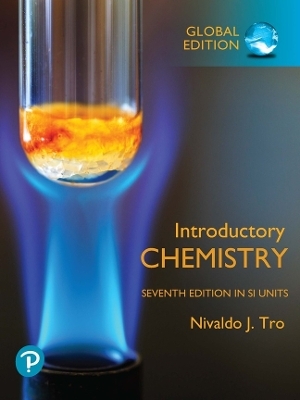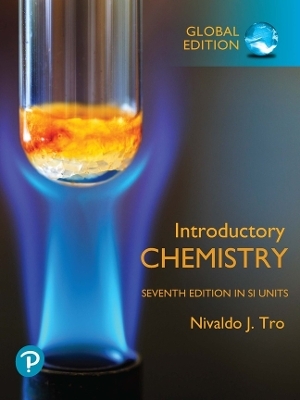
Value Creation – Strategies for the Chemical Industry, Second Edition
Wiley-VCH Verlag GmbH (Hersteller)
978-3-527-61224-6 (ISBN)
- Keine Verlagsinformationen verfügbar
- Artikel merken
Written by a global team of top managers and senior McKinsey experts, this expanded and completely revised second edition provides a wide-ranging manual on the subject of value creation in the chemical industry. Drawing on extensive first-hand management experience, several hundred consulting engagements, and in-depth research projects, the authors outline the key ingredients for managing chemical companies successfully. The book addresses in detail key issues of strategy and industry structure, describes best practice in the core functions of the chemical business system, looks at the state of the art in organization and post-merger management, and covers a selection of the most important current topics such as industrial biotechnology, the role of private equity, and the chemical landscape in China. Although mainly directed at executives and managers in the chemical industry, the knowledge contained in this comprehensive overview will also benefit scientists, engineers, investors, students, and anyone else dealing with management issues in this sector.
Florian Budde is a Director in the Frankfurt office of McKinsey & Company, Inc. He co-leads the firm's European Chemicals Practice and has served a large number of chemical clients on strategic, organizational, and operational issues, with an emphasis on capital market-oriented corporate strategy. Earlier in his career, he was based in McKinsey's Seoul Office for two years. He holds a PhD in physical chemistry. Utz-Hellmuth Felcht is Chairman of the Board of Management of Degussa AG and a member of the Board of Management of RAG Aktiengesellschaft, as well as holding a number of other Supervisory Board positions. He also serves as Vice President of the German Chemical Industry Association (VCI) and as a member of the Board of the German Association for Chemical Technology and Biotechnology (DECHEMA e. V.). He has a PhD in chemistry and is an honorary Professor of the University of Munich. Heiner Frankemolle is a Director of McKinsey & Company, Inc. based in the Cologne office. He leads the firm's Global Chemicals Practice. The main areas of emphasis in his client work are corporate transformation, strategy, M&A, and post-merger management, as well as total operational performance and continuous improvement. He holds a PhD in agricultural economics.
Preface.Acknowledgements.List of Contributors.1 Today's Chemical Industry: Which Way Is Up? (Karsten Hofmann and Florian Budde).1.1 The Chemical Industry Today - A Snapshot.1.2 Eras of the Chemical Industry.1.3 Summary.2 Shareholder Value Orientation: Not a Question of Whether, but How (Bernd Heinemann and Thomas Augat).2.1 Capital Market Deviations as the Key Challenge for Shareholder Value Orientation.2.2 How Capital Markets Reflect Fundamental Value Creation.2.3 New Tools for an Advanced Shareholder Value Orientation.2.4 Summary.3 Structural Drivers of Value Creation in the Chemical Industry (Eric Bartels, Thomas Augat, and Florian Budde).3.1 Introduction to the Study.3.2 Mobility in a Mature Industry.3.3 What Drives Performance?3.4 A Closer Look at Value Creation in the Segments.3.5 Summary.4 Chemicals - Driving Innovation in Other Industries (Thomas Schreckenbach and Werner Becker).4.1 Liquid Crystals: Superlative, Not Superfluous.4.2 Outlook.4.3 Summary.5 Today's Challenges and Strategic Choices (Florian Budde, Utz-Hellmuth Felcht, and Heiner Frankemolle).5.1 Overall Outlook Stable.5.2 The Value Kaleidoscope.5.3 What Happens Next?5.4 Summary.6 An Approach to Determining the Long-term Attractiveness of Commodity Chemical Businesses (Scott Andre, Sunil Sanghvi, and Thomas Rothel).6.1 Looking beyond Cyclicality.6.2 Putting the Model to Work.6.3 The Example of Ethylene.6.4 Tailoring the Model.6.5 Conclusion.6.6 Summary.7 Middle East: Opportunities and Challenges from the Rapid Emergence of a Global Petrochemical Hub (Christophe de Mahieu, Christian G'nther, and Jens Riese).7.1 Turning to the East.7.2 Pathways to Growth for the Middle East.7.3 Way Forward for the West.7.4 Capturing the Value.7.5 Conclusion.7.6 Summary.8 Survival when It's Hard to be Special: A Perspective on Specialty Chemicals (Eric Bartels, Joel Claret, Sabine Deppe, and Ralph Marquardt).8.1 Performance Has Been Disappointing.8.2 The Market Is Not Getting Any Easier.8.3 Meeting the Challenge - Five Key Levers to Pull.8.4 Summary.9 Creating the World's Leading Specialty Chemicals Company (Utz-Hellmuth Felcht).9.1 The Portfolio: "Creating the World's Leading Specialty Chemicals Company".9.2 Organization: "as Decentralized as Possible, as Centralized as Necessary".9.3 A United Corporate Culture: "Blue Spirit".9.4 New Challenges and the Next Transformation Goals.9.5 Conclusion.9.6 Summary.10 Prospects for Agribusiness: an Essential Contribution to Global Food Demand (Michael Pragnell and Robert Berendes).10.1 The Rationale of Agribusiness.10.2 Three Eras of Agribusiness.10.3 Driving Plant Yield.10.4 Opportunities beyond Yield.10.5 Summary.11 Industrial Gases - Growth by Continued Self-Renewal (Aldo Belloni and Lennart Selander).11.1 'The Invisible Industry': Stability and Profitability.11.2 One Hundred Years of Success: the Winning Ingredients.11.3 Fit for the Future: Ready to Meet the Challenges.11.4 Summary.12 Perspectives of Chemical Distributors as Partners of Industry (Klaus Engel and Gabriele Roolfs-Broihan).12.1 From Wholesaling to Supply Chain Management: the Evolution of Chemical Distribution.12.2 An Industry on the Move - the Major Trends.12.3 Perspectives Within Changing Environments.12.4 The Future Outlook.12.5 Summary.13 Systematically Revitalizing Innovation in the Chemical Industry (Birgit K nig, Gary Farha, and Thomas Weskamp).13.1 Drivers of Innovation.13.2 How to Organize for Innovation.13.3 Summary.14 Innovation for Growth (Thomas M. Connelly).14.1 The Ever-Present Challenges for the Innovation Process.14.2 Three Lessons Guide Us.14.3 What Will the Future Bring?14.4 Summary.15 The Four Pillars of Sustainable Purchasing Transformations (Helge Jordan, Nicolas Reinecke, and Khosro Ezaz-Nikpay).15.1 Designing a Performance Transformation Program.15.2 Initiate and Anchor Behavioral Change in the Organization.15.3 Generate Impact through a Proven Value Creation Process.15.4 Create a Tailor-made Performance Measurement and Management System.15.5 Summary.16 Feedstock Price Volatility and How to Deal with It (Scott Andre and Sunil Sanghvi).16.1 What is Driving Feedstock Price Increases and Volatility?16.2 A Brave New World of Feedstock.16.3 Meeting the Challenge of Feedstock Volatility.16.4 Conclusion.16.5 Summary.17 Taking a Leap in Purchasing (Gregory Nelson).17.1 Maximizing Value Creation.17.2 Creating Sustainable Value for the Business.17.3 The Next Horizon.17.4 Summary.18 Excellence in Operations - the Never-ending Journey Continues (Leonhard Birnbaum).18.1 Operational Improvement - the Bar Is Rising.18.2 Making Lean Operations Happen in Chemicals.18.3 Summary.19 State-of-the-art Production Concepts in the Chemical Industry (Uwe Nickel).19.1 Operating in a Transformed Environment.19.2 Challenges and Responses.19.3 Outlook.19.4 Summary.20 The Role of Site Services and Infrastructure for Productivity Management (Alejandro Alcalde Rasch).20.1 Site Services and Infrastructure: an Important Driver of Manufacturing Productivity.20.2 Transition: Site Services and Infrastructure's Coming of Age.20.3 Going Forward: Increasing Site Services and Infrastructure's Competitiveness.20.4 Summary.21 Creating a Revenue Advantage through Sales and Marketing Excellence (John Warner, Jo)l Claret, Ralph Marquardt, and Eric Roegner).21.1 Defining World Class.21.2 Building World Class Revenue Capability.21.3 Summary.22 Achieving Top Performance in Supply Chain Management (Andrea Cappello, Martin Losch, and Christoph Schmitz).22.1 Supply Chain Management as a Strategic Lever for the Chemical Industry.22.2 Key Supply Chain Management Elements and Opportunities for the Chemical Industry.22.3 Delivering on the Opportunities - the Key Success Factors for Achieving Top Performance.22.4 Conclusion.22.5 Summary.23 Right Second Time - Unlocking Value with IT (Peter Peters and Detlev Ruland).23.1 Breaking the Barrier.23.2 World Class IT Infrastructure Management.23.3 ERP Harmonization as the Basis for Global Process Architectures.23.4 Making CRM Work to Create Profitable Growth.23.5 Key Success Factors for the Journey.23.6 Summary.24 Managing Organizational Performance (Karsten Hofmann and Heiner Frankemolle).24.1 Supporting Strategy by Structure.24.2 Understanding the Performance Challenge.24.3 Making Organizational Change Happen.24.4 Summary.25 Post-Merger Management: it's All in the Design (Eric Bartels, Tomas Koch, and Philip Eykerman).25.1 Phases of an Integration.25.2 Defining and Communicating the Aspirations.25.3 Fully Identifying Value Creation Potential.25.4 Determining the Cornerstones of an Effective Organization.25.5 Tailoring the Integration Approach.25.6 Summary.26 M&A - the UCB Case (Georges Jacobs).26.1 A Brief History of UCB - Eight Decades of Mergers, Acquisitions, and Divestments.26.2 The Formation of Surface Specialties-A Three-way Integration.26.3 The Integration of UCB Pharma and Celltech.26.4 Key Learnings.26.5 Summary.27 The Chemical Industry and Public Perception (Wilfried Sahm).27.1 Public Perception of the Chemical Industry-its Structure and Significance.27.2 Image and Acceptance in Germany.27.3 Creating Awareness and Acceptance through Communication.27.4 Current Challenges.27.5 Summary.28 Industrial Biotech: From Promise to Profit (Rolf Bachmann and Jens Riese).28.1 Time to Exploit the Potential.28.2 Waste Biomass - a Feedstock with Mass Appeal.28.3 Turning the Promise into Profit.28.4 Capturing the Value - How it is Done in Practice.28.5 Finding the Right Answer.28.6 Summary.29 Industrial Biotech at DSM: From Concept to Customer (Colja Laane and Feike Sijbesma).29.1 From Petro to Bio.29.2 From Principle to Product.29.2.1 Food, Feed, and Nutritional Ingredients.29.2.2 Pharmaceuticals and Fine Chemicals.29.3 From Specialties to Commodities.29.4 From Innovation to Impact.29.5 Summary.30 Leveraged Buyout Transactions - Challenges and Learnings (Achim Berg, Florian Budde, and Bernd Heinemann).30.1 Chemical Sector LBOs Show No Sign of Abating.30.2 Understanding Value Generation in Chemical Buyouts.30.3 Learnings for the Chemical Industry.30.4 Learnings for Buyout Firms.30.5 Summary.31 What Attracts Private Equity Firms to the Chemical Industry? (Thomas Jetter).31.1 Chemical Industry Restructuring.31.2 Private Equity Transactions in Chemicals-Success Stories, Mostly.31.3 The Value Drivers of Private Equity Investments.31.4 Summary.32 Facing China (Sonke Bastlein, Ralf Dingeldein, Tomas Koch, and Karsten Neuffer).32.1 China Is No Longer 'Optional'.32.2 Most Chemical Companies Are Not up to Speed.32.3 The Lessons of Confucius.32.4 Summary.33 China - Key for Success in Asia (Jurgen Hambrecht).33.1 Why China?33.2 BASF and its Long Relationship with China.33.3 Sustainable Development in China.33.4 Outlook.33.5 Summary.Index.
| Erscheint lt. Verlag | 25.2.2008 |
|---|---|
| Verlagsort | Weinheim |
| Sprache | englisch |
| Maße | 184 x 247 mm |
| Gewicht | 1192 g |
| Themenwelt | Naturwissenschaften ► Chemie |
| Wirtschaft ► Betriebswirtschaft / Management | |
| ISBN-10 | 3-527-61224-6 / 3527612246 |
| ISBN-13 | 978-3-527-61224-6 / 9783527612246 |
| Zustand | Neuware |
| Haben Sie eine Frage zum Produkt? |
aus dem Bereich


